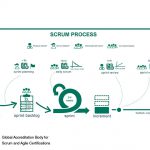Whatever happened to synergy? For quite a while in the 90s and early 2000s, synergy was the buzzword for the paradigm shifts that restructured the leadership landscape. When the dust settled and the hype dissipated, higher degrees of process integration and cross-functionality remained. These two synergistic elements continue to improve organizational profitability and efficiency. However, they have become the hands that not only give, but that also take away.
In the last quarter of 2013, Jack Neff, writing in Advertising Age, reported on a move by Unilever that “slashed more than 800 marketing positions” describing it as “an acceleration of a widespread downsizing of marketing departments.” He supported that observation with examples of the loss of 1000 marketing positions by Proctor & Gamble and reductions of marketing departments by Colgate-Palmolive, Energizer Holdings, and Johnson & Johnson, “among other companies.”
Many of these losses can be attributed to one of these two hands, process integration. Though not the defining characteristic, an element of process integration is identifying and reducing duplication of efforts. According to Neff, “[B]ehind the recent wave of marketing-department cuts: companies are trying to unravel the overlapping duties of the global and local organizations set up in the 1990s. Global marketers are winning at the expense of regional ones.” How can marketers who’ve been displaced from local and regional organizations survive? By using the other hand—cross-functionality.
The Scrum framework for project management is known for successfully employing cross-functionality. A Guide to the Scrum Body of Knowledge (SBOK™) says that the framework does this through the use of cross-functional Scrum Teams whose “members are generalist/specialists in that they have knowledge of various fields and are experts in at least one.” The newly displaced or about-to-be displaced marketer could find survival in surrounding him- or herself with other generalist/specialists in a team that capitalizes on their strengths. This team could then strategize and place itself in a position to offer business value.
That positioning could be in step with another market trend. Writing for Business Dictionary.com, Leo Sun says, “Large tech companies such as IBM and Hewlett Packard employ a large mix of both kinds of outsourcing [IT and business processes] in order to cut costs and preserve margins.” Noting that outsourcing is “a business model that has been around for ages,” Sun points out that outsourcing is a way companies of all sizes deal with tighter markets and the need for specialization—focusing on core business strengths. He also says that companies not as large as IBM may simply need “a few extra outsourced helpers, readily available in your home country, to pitch in during a product launch.” Among these “outsourced helpers,” he lists “sales and marketing staff.” Here then is an opportunity for a cross-functional team or company that has general marketing knowledge to develop specialized product launch expertise and become a profitable, strategic partner with numerous innovative companies of all sizes.
Scrum practices and insight greatly increase the odds of a cross-functional team being successful. Organizations such as the Project Management Institute (PMI) and SCRUMstudy offer certifications and training in Scrum and Agile frameworks in order to help organizations beyond software development be more agile and workers to be more valuable and employable.
In his 1996 bestseller, Jobshift, Richard Bridges noted that the careers of the twentieth century would become the jobs of the twenty-first, in which workers would move from one project to the next and from one employer to the next much as craftsmen did in earlier economic periods. Modern computer programmers, web designers, graphic designers, and software testers are examples of this type of workforce and are identified by Sun as functionalities that are typically outsourced. Many market and business trends, such as those noted above, indicate the need for modern workers to be specialists who have the general knowledge necessary to easily interface with many product and service organizations.
The Scrum and Agile frameworks shared by companies such as SCRUMstudy help companies and individuals develop the flexibility, adaptability, and creativity to be successful in the world’s evolving markets and workforces. In identifying how Scrum’s management approach is more appropriate to today’s market, Ruth Kim VP of Academics at VMEdu, Inc., says, “Scrum does not fight change, as other approaches do, that is why it can be so reactive and successful in certain fast-changing environments. The close collaboration between the cross-functional team members and the customer/Product Owner allow rapid feedback loops to be able to try out and learn from many more approaches than in a rigid Waterfall approach.”
Kim’s insights reinforce the idea that the survival of today’s workers, such as displaced marketing staff, may very well depend on their ability to be cross-functional and to form and work with cross-functional teams.
Works cited
Kim, Ruth. In an email to the author November 21, 2013.
Neff, Jack. (9 December 2013) “Who’s Next to Fall? Unilever’s Massive Job Cuts Put Other Marketers on Notice.” Advertising Age. (10 December 2013) http://adage.com/article/news/unilever-s-massive-job-cuts-put-marketers-notice/245587/.
Satpathy, Tridibesh, (2013) A Guide to the Scrum Body of Knowledge. USA: SCRUMstudy™.
Sun, Leo. (2012) “Outsourcing Your Business.” BusinessDictionary.com. (11 December 2013) http://www.businessdictionary.com/article/304/outsourcing-your-business/.









